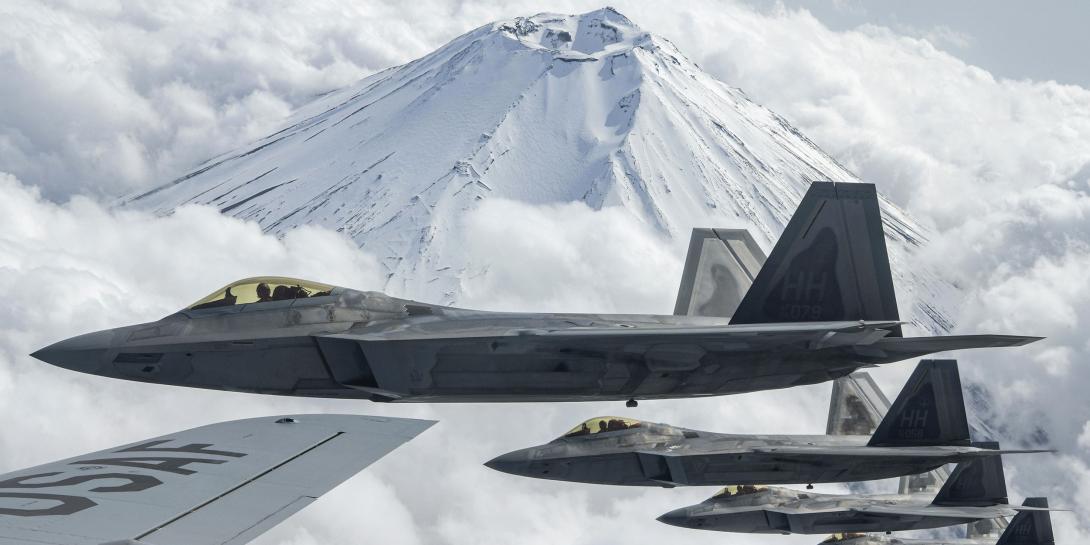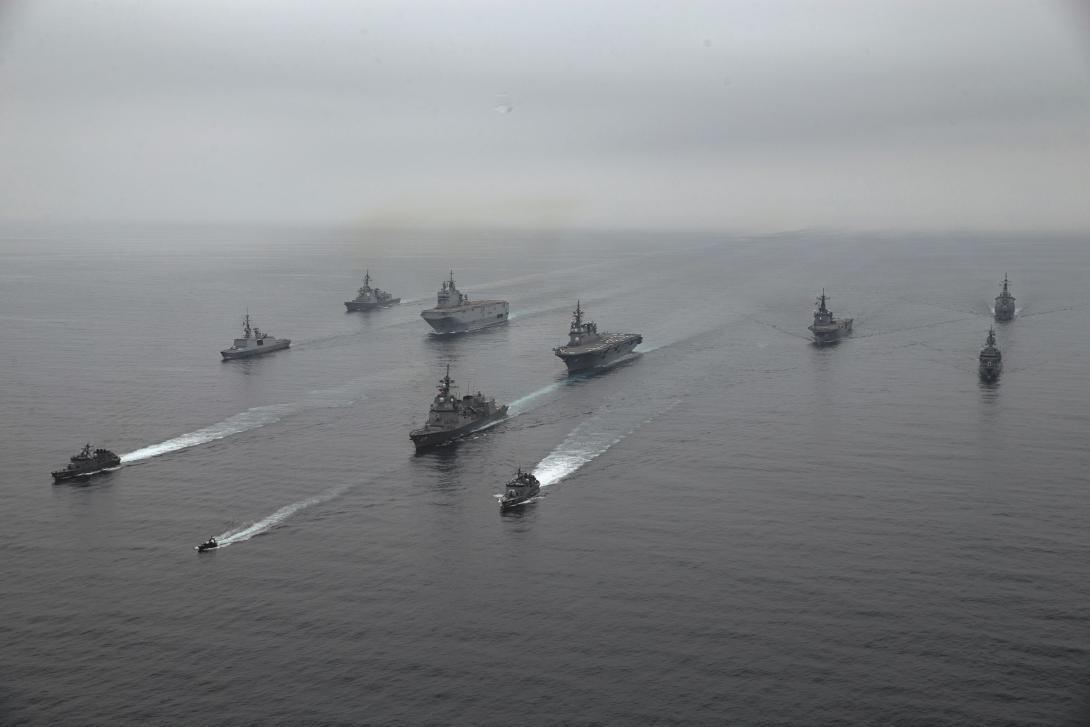INDOPACOM Builds Mission Partner Environment
The U.S. Indo-Pacific Command will deliver an initial mission partner environment next summer. The capability ultimately will allow U.S. forces to access classified and unclassified networks with one device. It also will provide more effective information sharing with allies and coalition forces.
The mission partner environment (MPE) will let users access classified and unclassified networks known as the Secret Internet Protocol Router Network and the Non-classified Internet Protocol Router Network, as well as the coalition network, through a single interface such as a laptop or virtual desktop infrastructure. It will be delivered through the joint warfighting network known as Indo-PACNET, the underlying infrastructure for the MPE.
“No later than this summer, we will have a minimal viable product for multidomain delivery provided through the previously mentioned Indo-PACNET,” reports Brig. Gen. Jacqueline “Denise” Brown, USA, the command’s J-6, or director of command, control, communications and cyber. “This will provide capability to unclassified and classified networks, which includes coalition partners, and that will be via that single pane of glass that we spoke of earlier.”
Ultimately, the MPE will be expanded to mobile devices. “More importantly, this MVP is just the tip of the iceberg. We plan on expanding this to mobile devices, leveraging commercial for classified solutions, really allowing us to access the same networks and desktops remotely that are available to us here at the headquarters,” Gen. Brown adds, using the initials for “minimum viable product.”
The MPE provides other benefits as well. “This solution is going to be scalable to meet INDOPACOM’s requirements. It will also improve INDOPACOM’s continuity of operations capability,” she notes.
The MPE is central to the Defense Department’s joint all-domain command and control (JADC2) concept, a once-in-a-generation modernization of the military’s approach to commanding and controlling forces. INDOPACOM’s efforts align with the Pentagon’s plans to provide an initial JADC2 capability in the coming months.
Gen. Brown stresses the vital role the MPE will play in future operations. “The mission partner environment is our main effort in the J-6 to enable INDOPACOM as a warfighting command. We recognize the critical importance of being able to both communicate and fight alongside our allies and partners from competition through conflict in the theater,” she states.
The command will first modernize the equipment it already has while preparing for the future delivery of capabilities in part from the Mission Partner Capabilities Office, which includes a secret and below releasable environment known as SABRE. “So, for example, we’ll use our existing capabilities but access or apply them differently. For the most part, we will accomplish it by modernizing our capabilities,” the general offers.
That will be achieved in part by increasing the resiliency of critical nodes through “path diversity,” which will require a combination of terrestrial circuits and secure cloud, and military and commercial satellite communications, including fifth-generation mobile networks known as 5G all the way down to the tactical edge.
INDOPACOM also is working with the Defense Information Systems Agency (DISA) to integrate technologies developed under the Thunderdome project. Thunderdome is DISA’s solution for implementing a zero-trust approach, which means that all users and devices are authenticated before being allowed access to Defense Department networks. At its core, the zero-trust approach shifts the focus from securing a network’s perimeter to securing data. Thunderdome will be the enterprise solution, while the military services will provide security down to the tactical level (SIGNAL, October, page 18).
Gen. Brown describes DISA’s Thunderdome as the next step in the development of Indo-PACNET. “First, we’re going to work with DISA on their Thunderdome program. That is really what we’re aiming for. It’s a datacentric approach to leverage industry to determine the best path forward,” she says. “Where we want to move towards is a single sign-on. We want to move toward a multilevel security and then ICAM or identity credential access management. That will be the next steps as we continue to evolve Indo-PACNET.”
With a more datacentric approach, INDOPACOM also is now working with a joint data analysis team. The team arrived on-site in September. INDOPACOM is the recipient of one of the first deputy secretary of defense-sponsored advanced data analytics teams, also known as ADA. The team includes members from the Joint Artificial Intelligence Center and the Defense Department chief information officer.
The goal for the ADA team is to analyze and understand INDOPACOM’s specific data challenges at the mission level and to help develop a plan to address those challenges. Gen. Brown expects another visit lasting four to six months “to help us solve these problems and provide leave-behind capabilities.”
She cautions, however, that solutions for securing data cannot make that data too difficult to use. “While we understand that securing data is critical, it must not come at the expense of the visibility, availability or discoverability for the people who need to use it to achieve the decision advantage. That’s going to be probably one of our greatest challenges as we work with the ADA team.”
The advanced data analysis team could help provide INDOPACOM with processes and capabilities “to help us organize our data to better observe, orient and decide and act,” she adds, referring to the so-called OODA loop that describes the combat operations process.
The first two steps of the OODA loop, she explains, are critical for integrating data at the speed of decision making. “As we look at step one, observe, this is our greatest challenge when it comes to integrating data. This is because we have an enormous amount of it. To use it correctly, we have to be able to see our data end-to-end and understand what we have and what data is required for the mission versus what data is noise and not relevant to the mission.”
Once military officials are confident in the scope and integrity of the data, the second phase—orient—comes into play. “We need mechanisms to set aside our biases on what we are seeing to effectively analyze and synthesize the data. To accomplish these two steps, we require technologies that correctly integrate our data so we are set up to leverage artificial intelligence and machine learning effectively,” she elaborates.
Gen. Brown, who took over as the INDOPACOM J-6 in January, also is working to decouple mission data from the domains in which it is siloed, providing access to the right data at the right time and the right place while ensuring the data is protected. Furthermore, her team continues to roll out technologies designed to improve the effectiveness of the mobile workforce, to include commercial for classified solutions and cloud computing capabilities.
Additionally, the J-6 team has supported two major exercises known as Pacific Fury and Pacific Sentry. The lessons learned from those exercises help inform the organization’s various projects and priorities. Her team also has begun transitioning to the Defense Department’s Office 365 environment and expects to have a minimum viable product of the mission data platform by January.







Comments